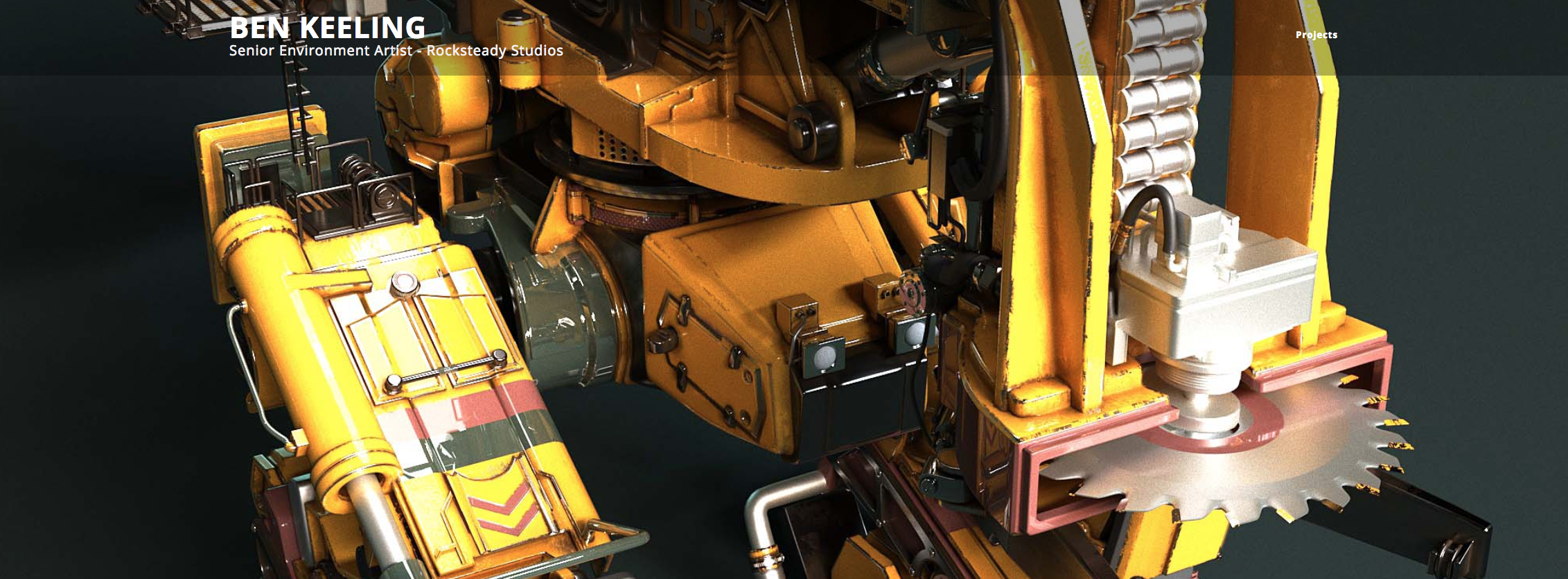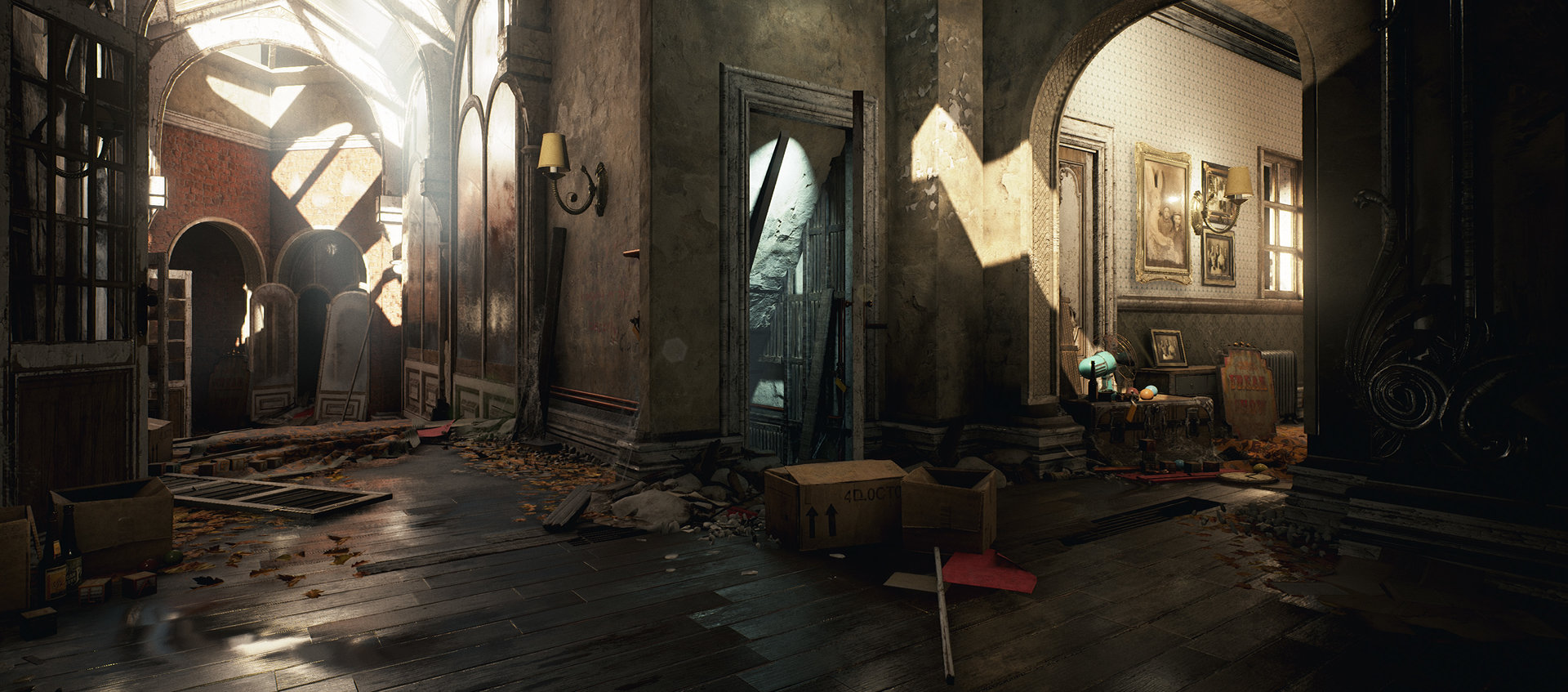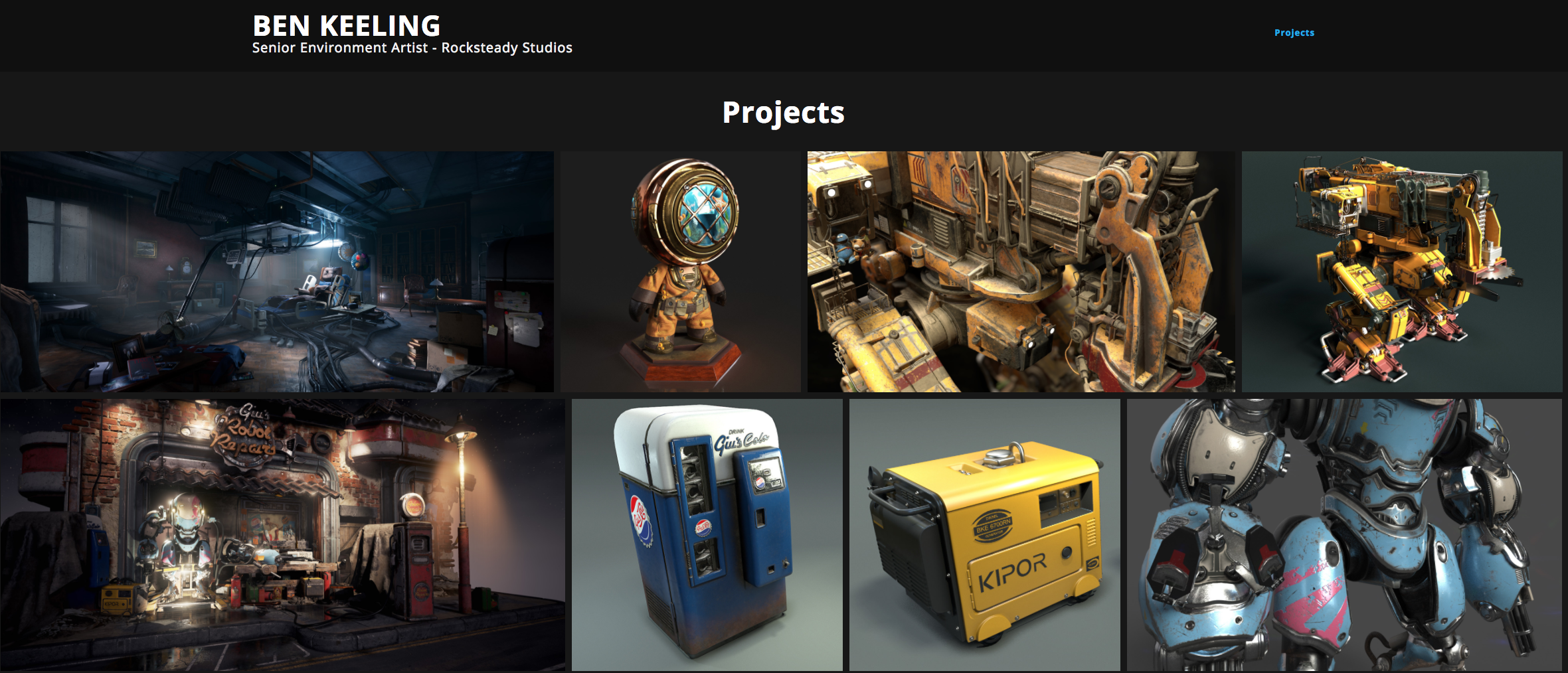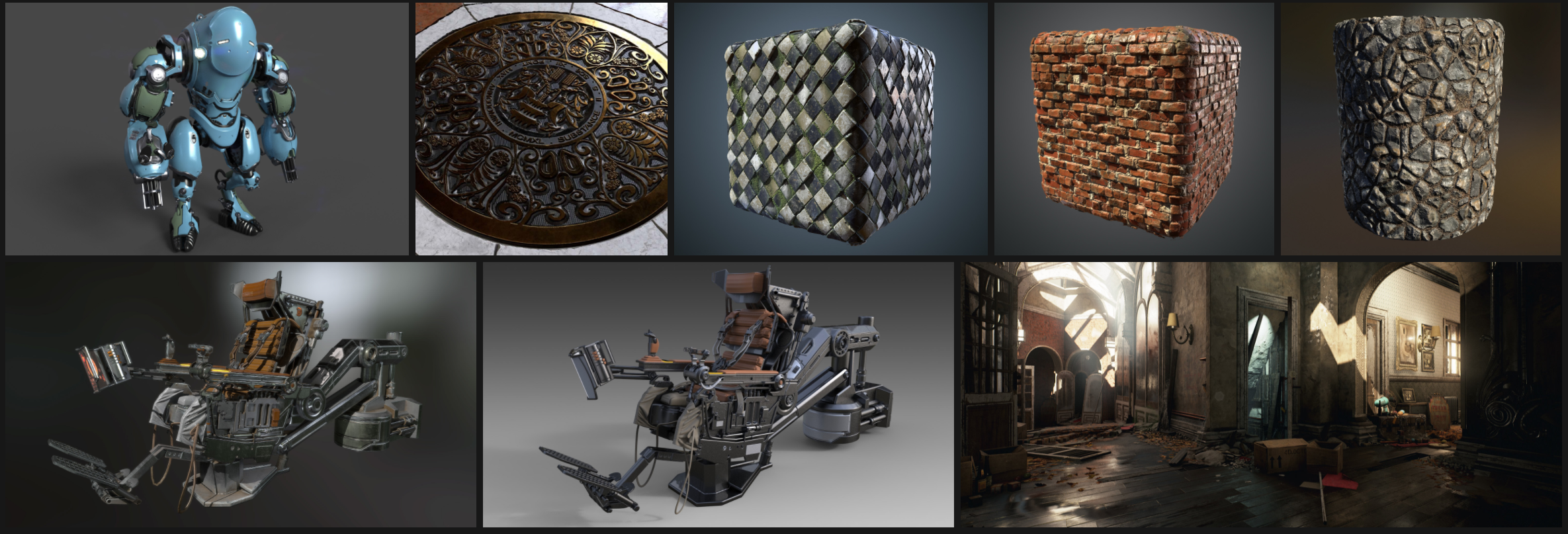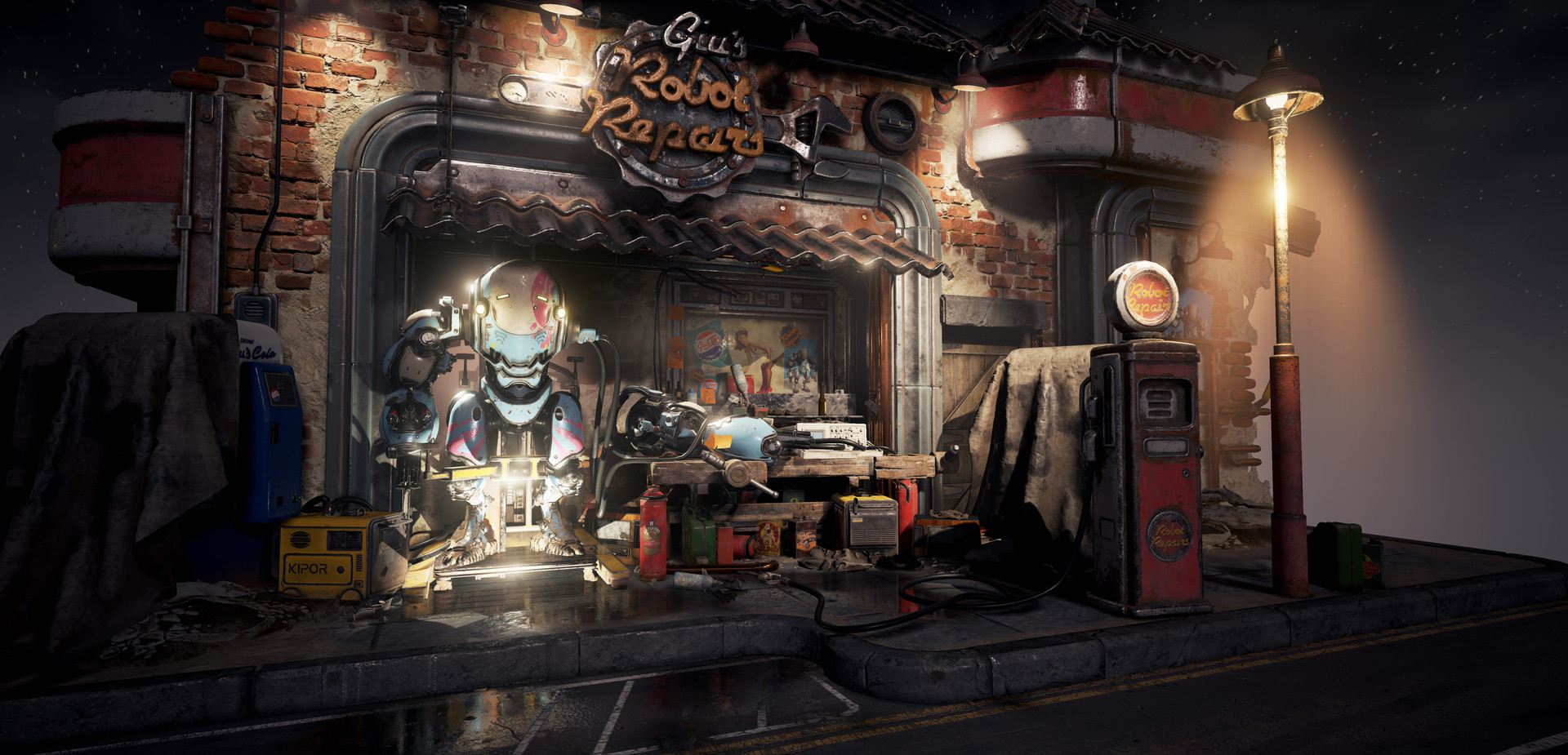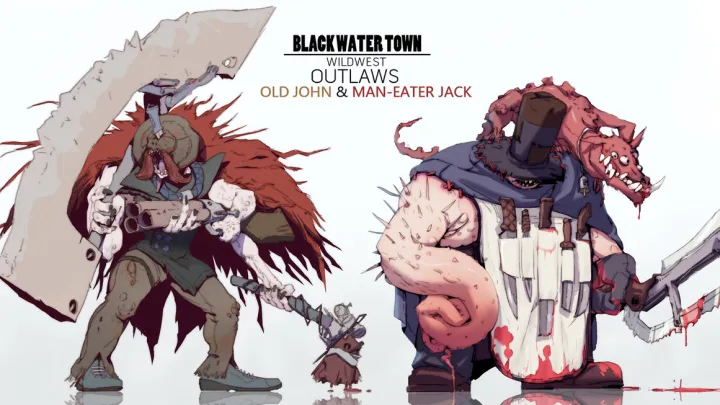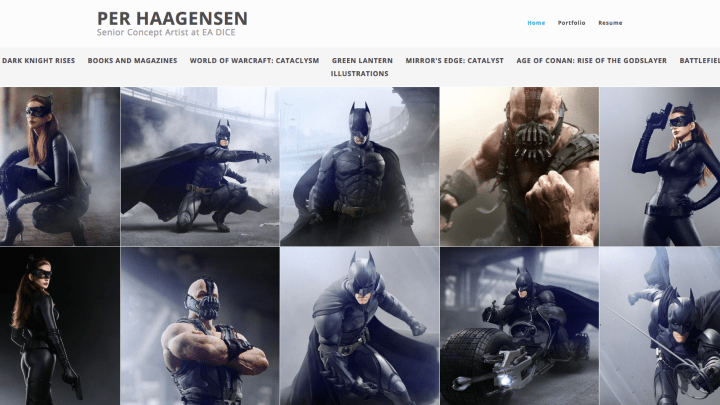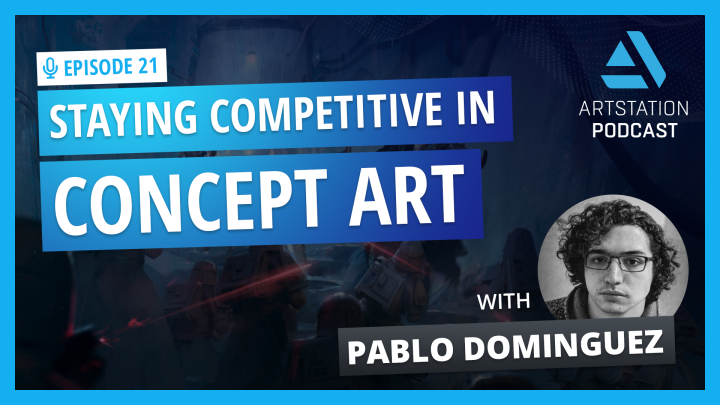Featured Pro Portfolio: Ben Keeling
Ben Keeling is a Senior Environment Artist who works at Rocksteady Games in London, England. He also recently received an Honourable Mention in the Game Environment/Level portion of the Beyond Human Challenge. What he likes about ArtStation Pro portfolio themes is that they look great and are so easy to set up.
Check out Ben’s ArtStation-powered portfolio.
What do you think is a portfolio must-have?
This differs for each discipline but to purely focus on environment art; a good portfolio demonstrates that you can lend your hand to all aspects of creating environments. It is really important to show that you can create successful tiling materials, set dress, fundamentals such as composition and lighting as well as making high quality assets. Often a portfolio will only demonstrate one aspect and having lots of materials or just being able to make good quality assets isn’t enough. It poses more questions than it answers and can be confusing for studios looking at your work.
It also very much depends on the role you are applying for. If you are more junior you might not have a large selection of work to show. At this point it is vital that you make sure to prioritize quality rather than quantity of projects or artwork. When I got my first industry job I only had one portfolio piece and that was enough to get me noticed.
When I have reviewed potential candidates in the past, we are never short of excellent work and as a result of this we tend to look at the work very fast. For an art lead, reviewing someone’s work tends to be a small part of their day to day job and so you need to be able to make an impact. Make sure your contact information is noticeable and don’t fall into the trap of over-complicating your portfolio with themes and excessive menus and links- it makes your work too hard to find and draws focus from the art itself. ArtStation has done a great deal to simplify and streamline the way artists display their work, which means they don’t need to worry about how their portfolios are presented anymore. They have provided great themes and easy access to people’s work, but you still need to show killer work. You want someone reviewing your work to decide to interview you within the first few seconds not minutes.
Most of all, I like to see personality in an artist’s work. I want to know what their passions are and how they tell a story. One of the hardest things to do is tell a story in an environment alone. If you can master this skill, you will definitely go far.
Tell us about your experience participating in an ArtStation community challenge.
I had a great time taking part and competing in the competition. I have always wanted to do a big environment challenge like that but I have often found they were slightly unrealistic timescales for someone with a full time job. Finding the motivation to work an extra three hours a night is tough after a full day of doing 3D.
What drew me to the ArtStation challenge was not having to design or concept. I love doing that aspect of environments but in a shorter time span it was one less thing to worry about. I really liked the focus on community. Being able to search for concepts and see the progress on the concepts before opting to create something in 3D felt really natural to me. I was constantly surfing the concept page before deciding on what concept to choose. I even bookmarked all my favorites and even now there are some concepts I would quite happily still pick.
When I started I had very clear objectives about what I wanted to achieve artistically: I try to learn something new with each project I take on. I wanted to try and push myself more this time by sticking to a stricter deadline and I also thought the added pressure of being in the community limelight could be a good motivator!
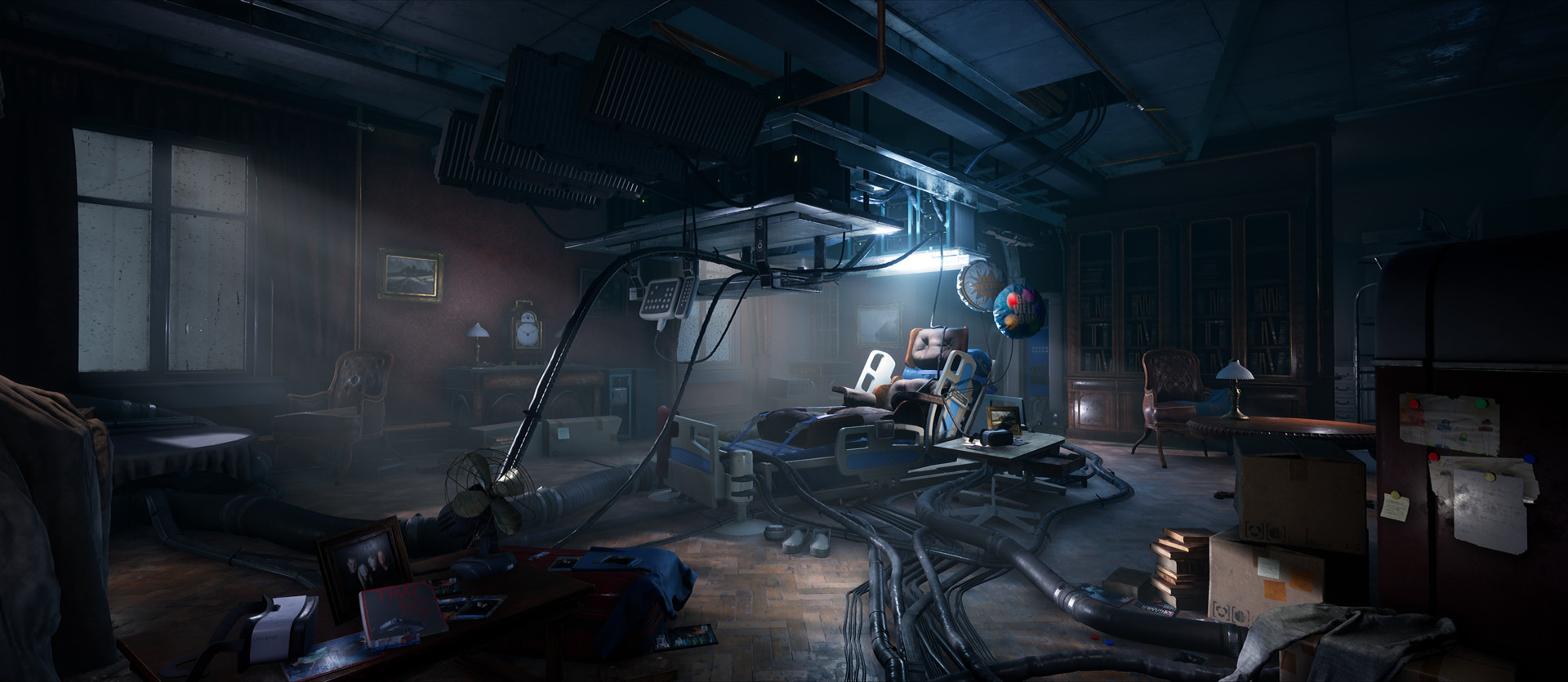
I started by putting together a plan of how I was going to achieve the environment. Generally people start with paint overs to break down the concept, but as I do this stuff a lot for work it tends to just happen in my head now. I started with a blockout making sure to go into further detail than I thought I should. I found that I was always way too eager to start my scenes that I often rushed the blocking out stage. I allocated myself at least two weeks to get this right which was a quarter of the project time.
After that it was about getting the broader brush strokes down first. Tackling the main key assets and trying to work in the most modular way possible. You can often find you can reuse models and assets where you don’t expect which helps a great deal on a project like this. I then just picked the themes and worked from there; One week for furniture props, one for general props and so on. I also allowed myself a decent amount of time to polish and apply a lot of feedback that I received from work colleagues and people in the competition.
By the end of the challenge, I learnt a great deal about how to manage myself in a very limited timescale, as well as focusing on telling more of a story with my piece. I received some of the best and most helpful paint-overs and feedback from my work colleagues on the challenge so I am really grateful for that.
What inspires you to create art?
Many many things but the biggest thing for me is films and concept art. I spend a lot of time perusing websites like Artstation and Pinterest for inspiration and save the things I like. I have many areas of reference which I have collected over the years which can be as simple as hard surface photos or even new project ideas. When I am feeling uninspired this helps to give me new ideas. Watching films is also a great way to find new ideas and themes. I also like to travel a lot and seeing everything from natural formations to various styles of architecture helps to build on that visual library. Selling scale is extremely important to an environment artist and seeing things in the real world really helps with this.
I am also extremely motivated by the urge to be the absolute best at what I do. I have this craving to find a particular strength and ability within my field of work that I am passionate about and be one of the best in the world at that particular skill. I think that is why I have this idea of learning something different with each piece of work I do because I don’t think I have found that area of expertise yet. This keeps me very driven and eager to push myself and learn new processes and create new projects.
What is the best art advice you’ve ever received?
I have received a lot of extremely excellent pieces of advice over the years but there are two real stand out ones. Firstly, when I was a student one of my peers talked about what I now refer to as transitions. He mentioned that when two surfaces meet there is often not a harsh line. Be it a skirting board, build up of dirt or weathering, piece of trim or leaves. These examples really help to bed together environments and make them believable. This was a piece of advice I always try to take with me on everything I do.
The second one was really recently. One of my best friends provided me with some excellent paint-overs and critique for my tree mech model. He talked about a technique traditional to film which was about breaking straight lines. He gave me some excellent paint-overs and feedback about making sure there were small alterations in the straight silhouette lines to push the realism of my model. It was a technique that really helped me push that model to the next level of quality. Often those final tweaks and changes are what really elevates your work.
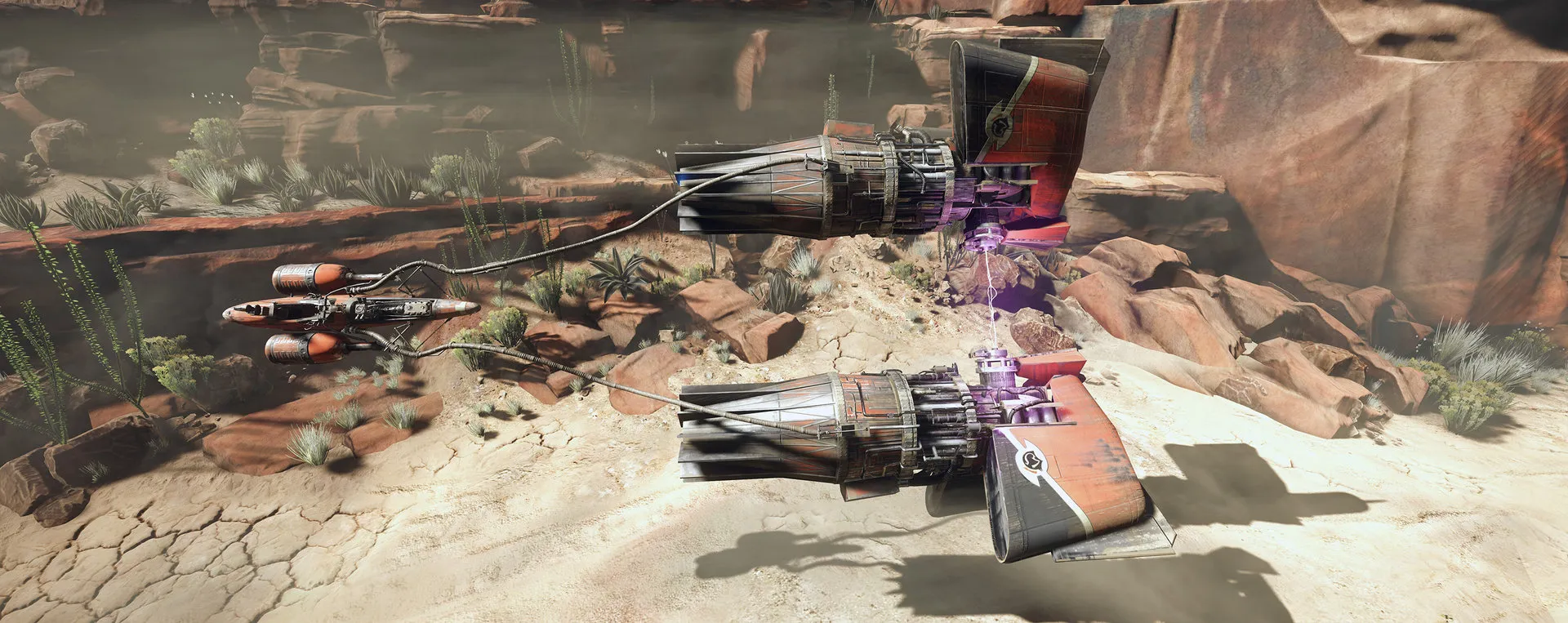 See more of Ben’s work on his portfolio website. To learn more about ArtStation Pro, visit the page here.
See more of Ben’s work on his portfolio website. To learn more about ArtStation Pro, visit the page here.
